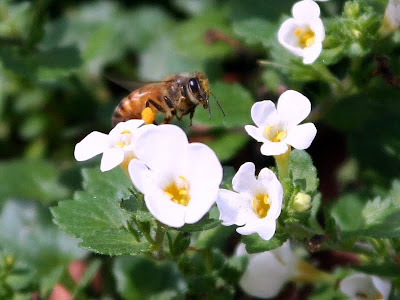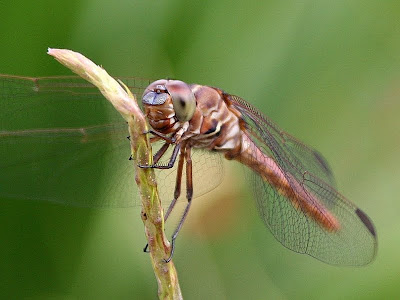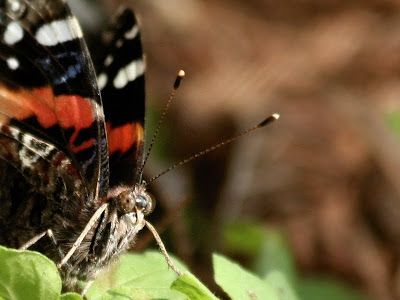And more than we realize might be happening in their little heads. I'm currently reading Life in the Undergrowth; its author, the naturalist Sir David Attenborough, points out that scientists have long considered insects "automata, mindless robots reacting automatically to the simplest stimuli," that crediting them with any of our human motives was thought "unjustified and scientifically disreputable anthropomorphism." Recently, however, scientists have begun to revise that attitude. In an experiment recounted in An Obsession with Butterflies: Our Long Love Affair with a Singular Insect, swallowtail butterflies learned to revise instinctual behavior to survive. Lantana, a common nectar source, "signals" butterflies, one of its pollinators, with color: a yellow bloom likely holds nectar while an older, red bloom does not. When scientists drained the fresh yellow blooms and filled by hand the red blooms, the swallowtails didn't starve to death as they would if they were simple "machines" obeying pre-programmed commands. Instead, they overrode their instinct, tried the red blooms, and were rewarded with food. They had learned that their instinctual preference for yellow wasn't feeding them and found a solution for their hungry bellies in the red.
When I look at field guides, the pictures often capture butterflies, for example, from behind, like this:

I can study the wing patterns and figure out a species identification, but I get no insight into the insect's attitude. To me, this kind of photo is equivalent to knowing a stranger as he drives by in a limousine with tinted windows. Oh sure, he might be a big-deal movie or rock star, but even though I saw the limo pass, I have no personal knowledge of the man inside, as I would get at a superficial, shake-hands-and-gush backstage meeting.
That's why I prefer a head-on shot, one that lets the little bug stare right back at the lens, giving me a little attitude.

Sparkle in the eyes is also important. My newest lens, a 300 mm, allows me to sit six or seven feet away from the subject. This distance provides enough cushion between us that the creature won't try to scurry away or hide. I can relax and take several pictures as my subject goes about its life. With luck, I'll catch the wet or shiny part of the eye at just the right moment, humanizing the little guy.


A butterfly or lizard on the computer screen is huge; in real life, many of my subjects are the size of a quarter or the first two digits of a finger, their little eyes difficult to catch. A slight shift of the lens or the subject [I breathe; the wind blows; the subject spies food or a predator] and the point of clear focus will become a shoulder or front leg, not the all-important face. For me, a successful picture is the capture of an intelligent eye staring right back at me.


In real life, the subject cannot hold its gaze with the same unwavering intensity of a photo, but engaging my eyes with its own gives the subject an upfront honesty that intimates an intelligence that I enjoy experiencing.


